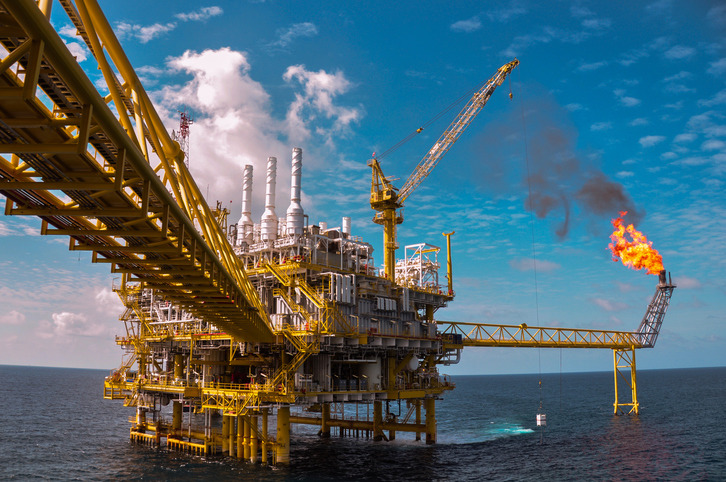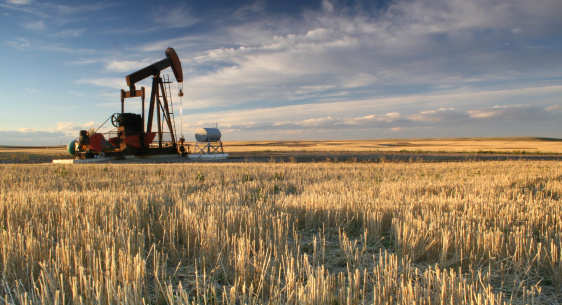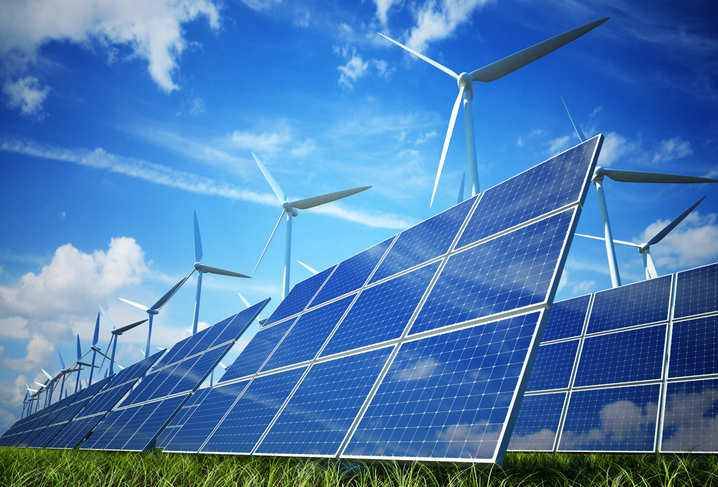
April 25
First growth in Indias natural gas production in six years
New Delhi: India’s natural gas production grew for the first time in six years in 2017-18. Gas output grew 2.35 per cent to 32,649 Million Standard Cubic Meter (MMSCM) primarily due to production from onshore blocks offsetting a decline in production from offshore blocks, an ETEnergyWorld analysis of fresh data from the oil ministry shows.
Natural gas is a key input required for generating power and manufacturing products in the fertilizer and steel industries. The reversal in the six-year declining trend assumes significance coming at a time when the government is targeting a quick ramp up in the share of natural gas in the overall energy basket, arrest a consistent declining trend in its domestic crude oil production and reduce its mounting crude oil import bill -- which increased 25 per cent to $88 billion last fiscal and is expected to increase by 20 per cent to $105 billion in 2018-19.
An analysis of year-wise data on natural gas production since 2002 indicates that the country recorded its highest ever natural gas production from onshore blocks in 2017-2018. Gas production from onshore blocks including Coal Bed Methane (CBM) grew 8 per cent to 10,639 MMSCM last financial year as compared to 9,858 MMSCM recorded in the previous fiscal. The country’s offshore production, however, declined by less than one per cent to 22,011 MMSCM in 2017-18 as compared to 22,038 MMSCM recorded in the previous fiscal (2016-17).
The increase in production after years of a consistent decline is a major relief for the domestic economy which has been starved of cheaper domestic gas, a situation that was translating into increasing reliance on costly Regasified-LNG, said K Ravichandran, Senior Vice President at research and ratings agency ICRA. “The growth in the domestic gas production has been due to development of several new discoveries by ONGC and ramping up of production from other fields. Going ahead, ICRA expects domestic gas production to increase by around 20 MMSCMD over the next 5 years. This will come from the ongoing development of new fields by ONGC, OIL, Cairn and RIL-BP, besides some increase in CBM production,” he said.
India’s state-run petroleum explorer Oil and Natural Gas Corporation (ONGC) registered a 6 per cent growth in its cumulative natural gas production at 23,429 MMSCM in 2017-2018 on the back of healthy performance of the company's onshore and offshore blocks. The firm’s onshore production increased by eight per cent to 5,638 MMSCM last fiscal as compared to the previous financial year while production from its offshore blocks increased by 5 per cent to 17,791 MMSCM.
Overall gas production by private companies and Joint Ventures from Production Sharing Contract (PSC) fields declined for the seventh straight year in 2017-18, falling by 8 per cent to 6,338 MMSCM as compared to the previous fiscal.
A decrease in production from KG-D6 field off the Andhra coast is the primary reason for the decreasing gas production in India along with limited new investments and maturing fields, according to Deepak Mahurkar, Partner and Leader, Oil & Gas Industry Practice at consultancy firm PwC India. “The investments on the anvil, if materialised in time bound manner, are expected to add significant production. Both private and PSU upstream companies have planned to increase their production cumulatively by about 30 billion cubic meter by 2022,” he said.
Natural gas production by Oil India Ltd (OIL), the second-largest state-owned oil and gas producing company, dipped in 2017-18 after recording continuous growth in the previous three years. The company’s cumulative gas production fell 2 per cent to 2,881 MMSCM during the fiscal as compared to the previous financial year.
India’s total Coal Bed methane production in Jharkhand, Madhya Pradesh and West Bengal increased 30 per cent to 735 MMSCM last financial year from 565 MMSCM recorded in 2016-17. The country natural gas demand increased by 5 per cent to 58,159 MMSCM in 2017-18 while natural gas import dependence increased to 45.4 per cent from 44.5 per cent in previous fiscal (2016-17).






